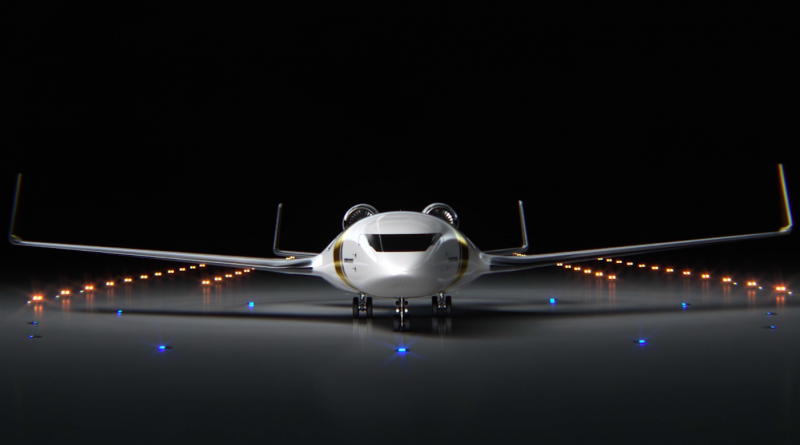
As climate activists disrupted events at the static park by Geneva Airport on the first day of this year’s EBACE, inside the exhibit hall Bombardier was providing the first in-depth update on its EcoJet concept aimed at technology for a more sustainable business jet.
Based on a mild blended-wing-body configuration with a slender lifting fuselage, distinct high-aspect-ratio wings and U-tail, the EcoJet demonstrator has been flown in sub-scale form to evaluate initial shaping and aerodynamics.
Now the company is moving to a second phase which will see an increased focus on systems and design aspects of the interior, as well as a potentially larger sub-scale demonstrator.
“We've flown it. We have a load of data from it and the data is good,” says Stephen McCullough, vice president of engineering at Bombardier. “It's getting to a stage now where it's quite representative and now what we're starting to look at is more about what systems support that, what configuration supports that and how do you want the inside of the cabin to be.”
Bombardier has now flown subscale versions of the EcoJet at two scales—the latest being an 18-ft.-span model. “It's probably likely that there still there's one more scale up that we would do before we would do a full aircraft,” says McCullough, who notes the next scale up “offers us a chance to put more representative aircraft-level systems onboard.”
A decision on the next scale up is probably another six months to a year away, he says. “It's really important that you don't lock down the next phase and say, ‘if only it had been 5% bigger than what we planned we could have put this the anti-icing system and so on onto it.' So we're still in the conceptual phase of what that would look like but probably from a confidence building point of view we will do one more step up.”
The shape of the EcoJet and the flight test program is “quite visible," McCullough says, "but the project has many other pillars to it... If you look at what we need to do to be carbon neutral by 2050, the product is one aspect of it all, but the people, the processes and the tools are a huge part of it too.”
Through the EcoJet, Bombardier is developing advanced modeling, simulation and optimization tools. “One of the other technology levers is the lightweight part of it all, so the other thing that we're looking at is how to optimize the structure to handle a shape like this. At first glance it looks quite composite-friendly, but there's a bunch of new emergent technology coming out in terms of either composites or how you form metals. People are also using more thermoplastics as secondary structure. So, the nice thing about this project is we're able to look at everything,” he says.
“Bombardier is giving our company and in particular, our engineers, a new toolkit for the future, and really a wider toolkit,” McCullough says.
